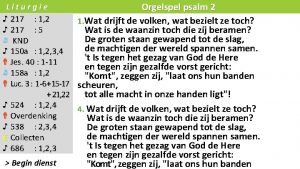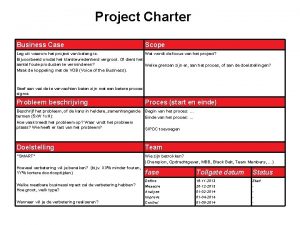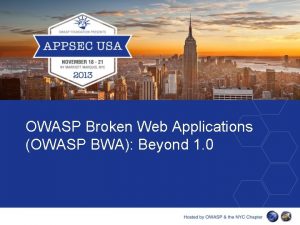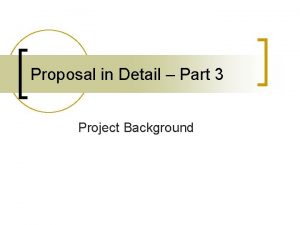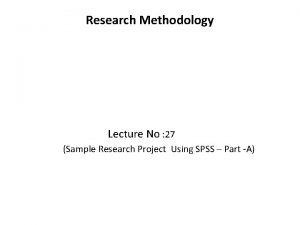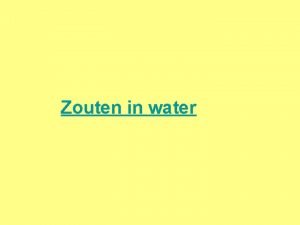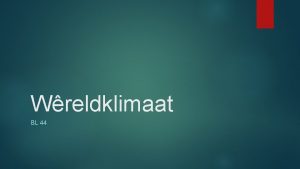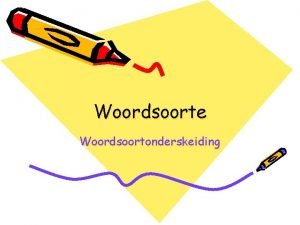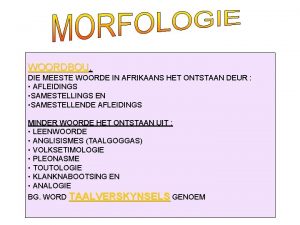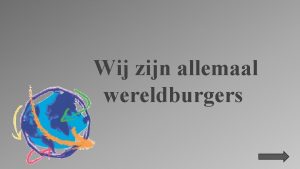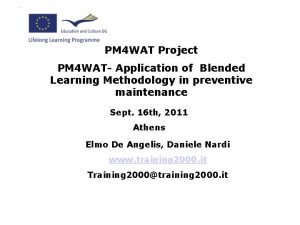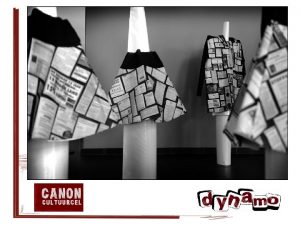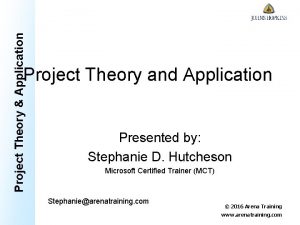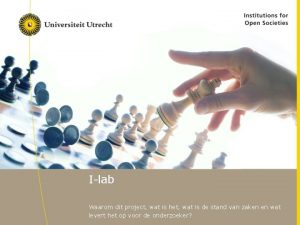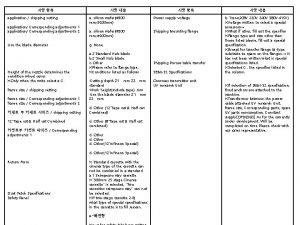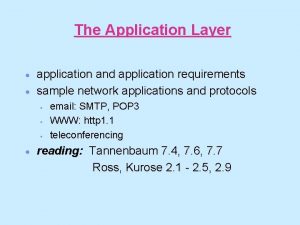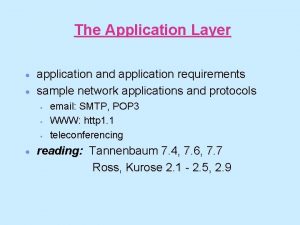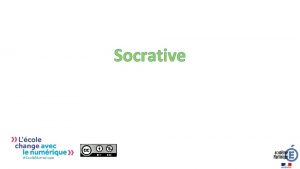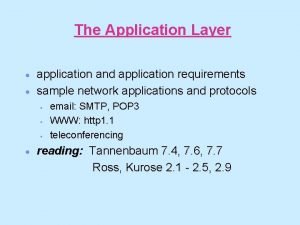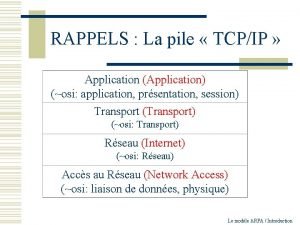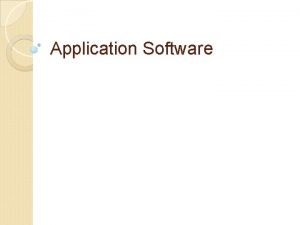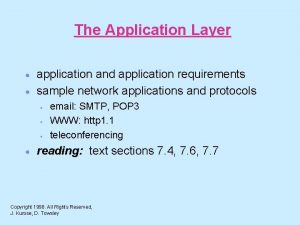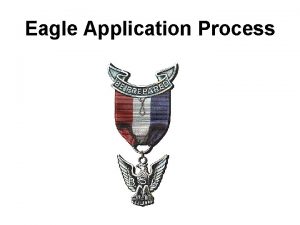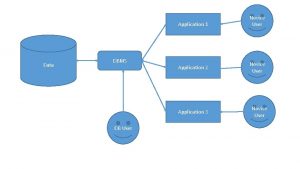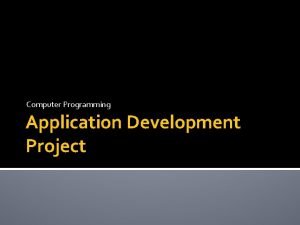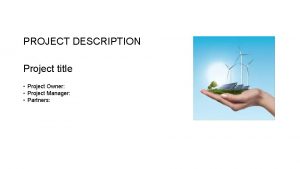PM 4 WAT Project PM 4 WAT Application





















- Slides: 21

PM 4 WAT Project PM 4 WAT- Application of Blended Learning Methodology in preventive maintenance Sept. 16 th, 2011 Athens Elmo De Angelis, Daniele Nardi www. training 2000. it Training 2000@training 2000. it

Who is TRAINING 2000 ? 1. Vet Organization in adults education since 1994, private for profit 2. Training Provider in the Marche Region 3. Organize training courses financed with public funds only: ESF, Ministry of Labour, EU funds for LLP projects 4. Participate in Eu project in the domain of LLP, engineering and new methodologies in teaching and learning in Adult’s education

EU projects development in the engineering domain executed before PM 4 WAT 1. Waste-train – www. waste-train. com 1. PROWAT – www. pro-wat. com

Cooperating partners in PM 4 WAT- years 2010, 2011 1. At national level we have called for partnership “ Organizations , Universities, Professionals interested in preventive maintenance in water systems: - University of Ancona , Hydraulic department ( supporting the initial survey and the testing phase; - Marche Multiservices from Ancona ( supporting the testing phase) - A. A. T. O. 3 of Macerata – Water Authority for the region of Macerata ( supporting the data collection of water networks(GIS) and testing of simulator - A. N. C. E Abruzzo – National Association of Building Construction ( supporting the identification of case study in the earthquake zone of Aquila, study of broken pipes, water suplly from Gransasso water consortium

Cont. from A. N. C. E. Abruzzo Aquila post earthquake, April 6 th, 2009:

PM 4 WAT Products in Italy 1. Preventive maintenance reports from AATO 3 , Multiservizi s. p. a. (district of Ancona, Central Marche Region), ANCE Abruzzo; 2. Web site, leaflet, training course for technicians/engineers; 3. Adoption of Blended-learning methodology in teaching and learning (LMS – MOODLE) 4. Eight UNITS of content http: //pm 4 wat. cti. gr/training/ 5. Testing and validation of the training methodology All products have been reproduced in Italian language.

What is blended learning ? • • Various interpretations Blending = combination of a few common aspects - instructional modalities or delivery media - instructional methods - online and face-to-face instruction -. . . all together • Blended learning and Modular training(Units of learning) – web based (LMS- MOODLE) The following are the characterisations for blended learning as it is practised today: • The provision of supplementary resources for learning programmes that are conducted mainly in the traditional way, through institutionally supported virtual learning environments; • Transformative course level practices underpinned by radical course designs which often make significant use of technology to replace other modes of teaching and learning. • A holistic view of technology and learning, including the use of the learners’ own technologies to support their learning.

Blended Learning Systems • Blended learning systems combine face-to-face instruction (> 0%, < 100%) with computer-mediated instruction (> 0%, < 100%)

Why Blended-learning? 1. Video presentation on technology led training http: //www. youtube. com/watch? v=ff. RU HKx 2 zy. U http: //www. youtube. com/watch? v=or. PY B 741 sq. Y&feature=related http: //www. youtube. com/watch? v=3 Su. N x 0 Urn. Eo&feature=related

PM 4 WAT - Blended Learning Actors develops Contents Expert of domain / content TRAINING MODULE Tutor Trainer use a module, acquire competences about Preventive maintenance for Water Utilities network provides training support Learner Learning Environment

Dimensions for Blended-learning Eight dimensions define the possibilities of blended learning: • delivery - different modes (face-to-face and distance education) • technology mixtures of (web based) technologies • chronology - synchronous and a-synchronous interventions • locus practice-based vs. class-room based learning • roles - multi-disciplinary or professional groupings • pedagogy - different pedagogical approaches • focus acknowledging different aims • direction instructor-directed vs. autonomous or learnerdirected learning.

Modularity – 8 Modules in PM 4 WAT • The objectives are the basis for the module contents and will be used for the definition of the corresponding learning objectives. A framework for the setting and description of each training module is presented, which should be filled in with detailed information by the module content responsible. • Example of Framework and training Module http: //pm 4 wat. cti. gr/training/

PM 4 WAT New Learning strategies: 3 phases • Learners go through three phases: 1. online self-paced learning to acquire background information 2. face-to-face learning (lab) focused on active learning and application experiences, NO lecture 3. follow-up online learning and support for transferring the learning to the workplace environment

PM 4 WAT testing in Italy Participation to the testing in Italy: 1. Five University students fron Engineering; 2. four experts/professionals 3. One University Professor Results from the testing:

Contributing Partner: ATO 3 Marche MARCHE REGION ITALY A. T. O. = Water Services Regulation Local Authority

ATO 3 Marche Case Study: Planning of investments on Maintenance and Rehabilitation INPUT DATA: • Integrated Asset Database and GIS Software: assets properties • Parametric cost curves: assessment of assets value depending on specific technical parameters

ATO 3 Marche Case Study: Planning of investments… cont. Asset Category Useful life (years) Salvage value (%) Springs 50 - 55 20 Wells (civil wors) 50 - 55 20 100 - 150 20 Simple Disinfection Plants 20 10 Treatment Plants (civ. w. ) 40 - 55 10 Tanks 60 - 70 10 Pumping Station (civ. w. ) 40 - 55 10 Mains 55 - 70 10 Distribution Network 50 - 55 5 20 - Reservoirs Meters Asset Category Rehabilitation/Replacement calculation: • Age > Useful life • Operation condition = Not Suff. INTERVENTION! Coefficient (%) Springs 0, 05 Wells (civil works) 0, 05 Reservoirs 0, 1 Simple Disinfection Plants 0, 2 Treatment Plants (civ. w. ) 0, 05 Tanks 0, 05 Pumping Station (civil works) 0, 05 Mains 0, 35 Distribution Network 0, 35 Meters 0, 00 Maintenance calculation: • Annual cost in proportion (%) to Asset value as new

ATO 3 Marche Case Study: Planning of investments… cont. RESULTS: 20 -year Plan Total investment: 314, 8 Mil. € (15, 9 Mil. € / year) – including drinking water production and distribution, wastewater collection and treatment Focus on Water System (drinking water supply): Investment Category Total (Mil. €) % Rehabilitation/Replacement 58, 7 Maintenance 31, 6 New Works 52, 2 37 142, 5 100 Total 90, 3 41 22 63%

ATO 3 Marche Case Study: Testing of the training simulator SELECTED LINK Step 1: • Reliability Computations

ATO 3 Marche Case Study: Testing of the training simulator… cont. Step 2: • Rehabilitation module Results and Output (export file): The rehabilitation module suggests: • The preferred rehabilitation options (3 out of 7 methods); • The year in which the first rehabilitation option is envisaged; • The expected service life of the rehabilitation; • The expected number of interventions within the defined time horizon (30 years, in the given example) • The associated cost, expressed as NPV (Net Present Value)

ATO 3 Marche Case Study: Testing of the training simulator… cont. Step 3: • Scenario manager Changes to the values referred to, e. g. , “Permanent stochastic load” (i. e. Earthquake load and occurrency rate) affect reliability computations, thus originating different results in terms of : • Year of first intervention • NPV associated to the different Rehabilitation options for the defined time horizon
 Psalm 217
Psalm 217 Ctq voorbeelden
Ctq voorbeelden Chat application abstract
Chat application abstract Owasp ova
Owasp ova The role of project management in achieving project success
The role of project management in achieving project success Background in project proposal
Background in project proposal Process discriminants in software project management
Process discriminants in software project management Reducing project duration examples
Reducing project duration examples Introduction to project management kathy schwalbe
Introduction to project management kathy schwalbe Project evaluation in software project management
Project evaluation in software project management Importance of software project management
Importance of software project management When conducting post project audits
When conducting post project audits Process indicators enable software project manager to
Process indicators enable software project manager to Ms project agile
Ms project agile Sample theoretical background
Sample theoretical background Varieties of project termination
Varieties of project termination Zouten in water
Zouten in water Wat is visie en missie
Wat is visie en missie Wat is die verskil tussen weer en klimaat
Wat is die verskil tussen weer en klimaat Selfstandige naamwoorde voorbeelde
Selfstandige naamwoorde voorbeelde Postmorfeem
Postmorfeem Noord oost west zuid
Noord oost west zuid
